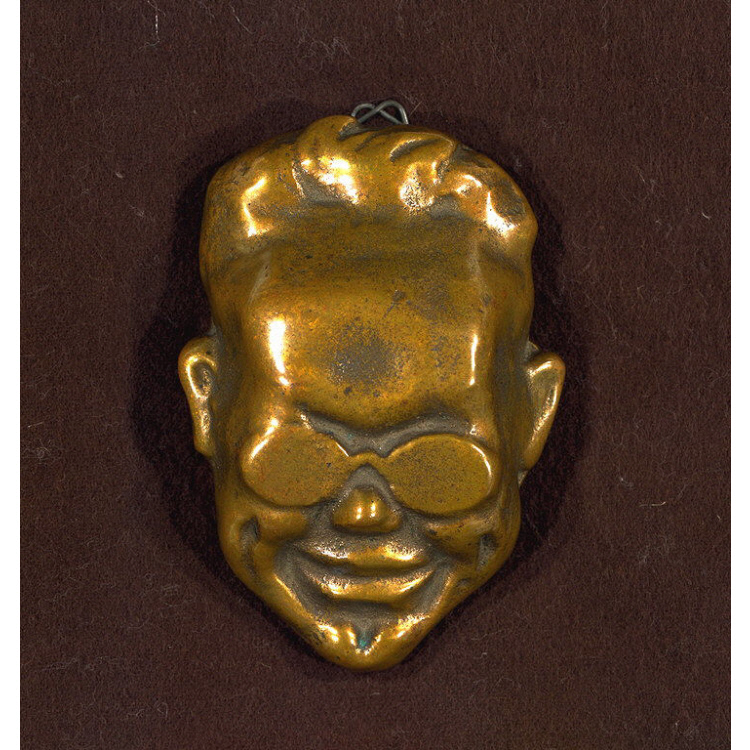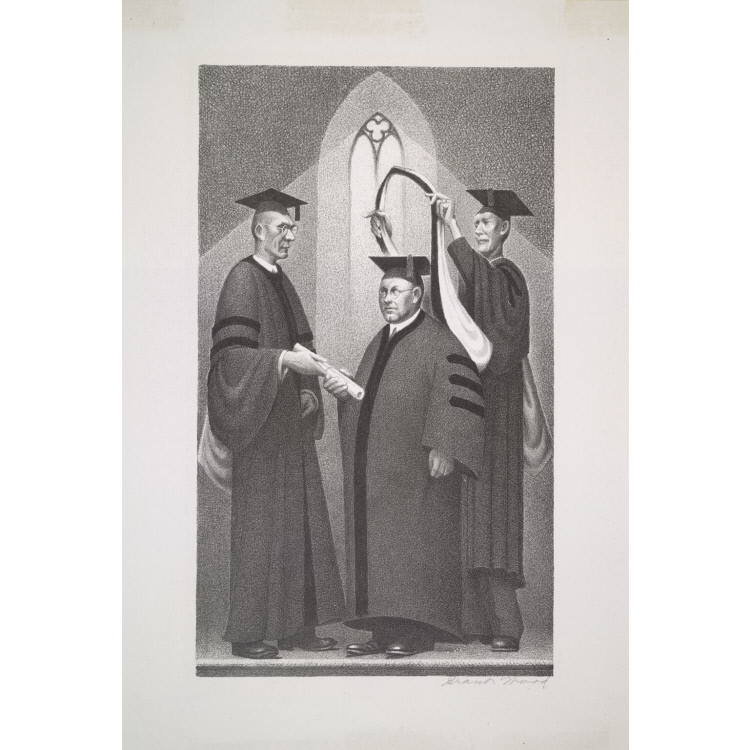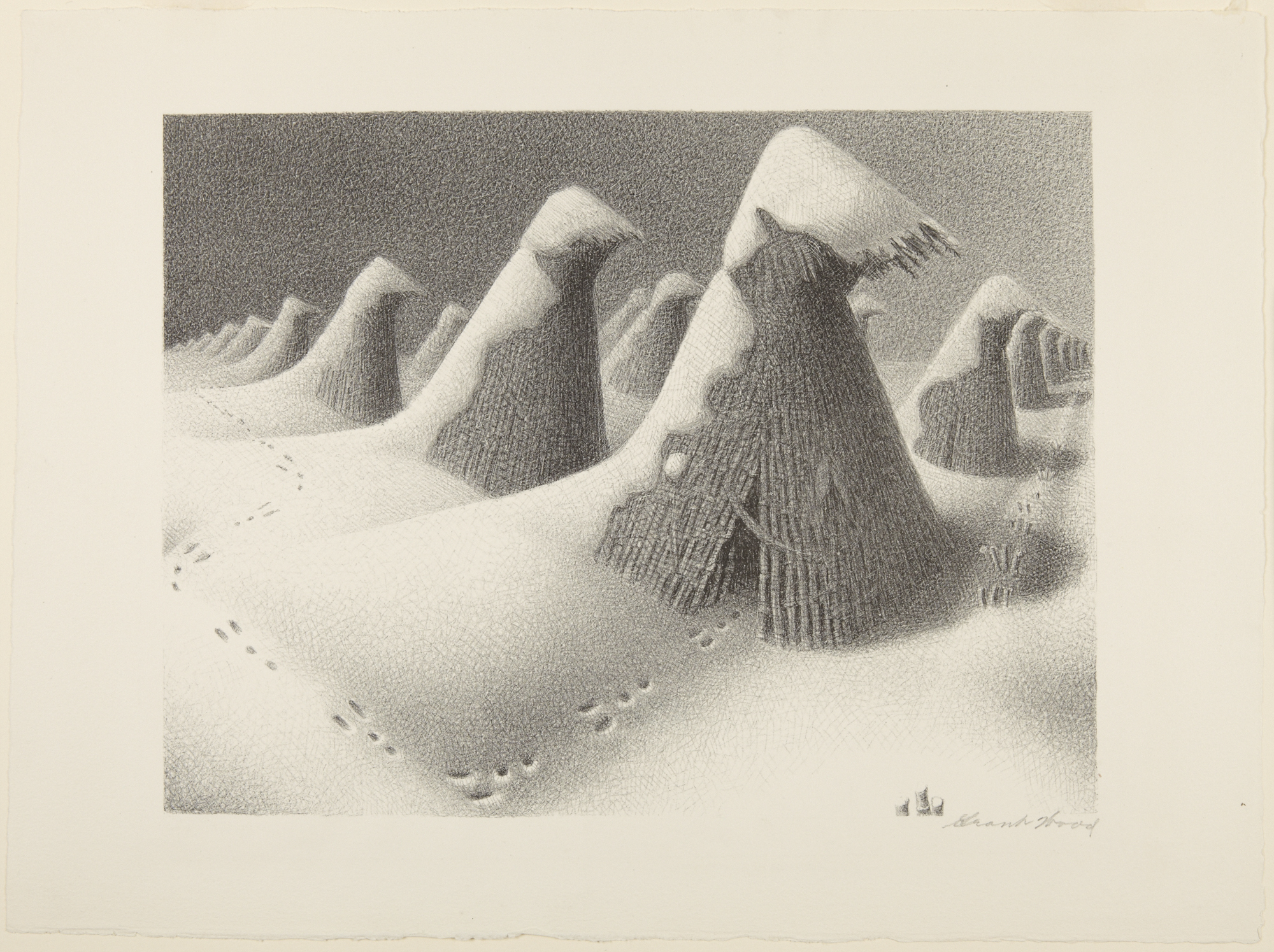Grant Wood
Wood's brand of Midwestern regionalism has often been seen as a response to his own youth, spent on an Iowa farm and in the town of Cedar Rapids. These years were perhaps idealized when he looked back on them from Chicago and Paris, where he went for artistic training. He returned to Cedar Rapids with a mildly avant-garde direction to his work, which he first applied to decorative arts and design. By 1930, he had developed a distinctive painting style—a kind of meticulous, down-to-earth realism—that he imposed on the Iowa landscape. Wood's compositions, consisting of neatly ordered farms, generously spaced across a wide horizon, led viewers to believe that at the heart of America lay the virtues of agrarian life. Twice Wood ventured into colonial fables, painting the Midnight Ride of Paul Revere and then Parson Weems' Fable. Both works, done in a tidy realistic style and featuring spacious rolling Iowa landscapes, are noteworthy for their "midwestern" approach to colonial history.
William H. Truettner and Roger B. Stein, editors, with contributions by Dona Brown, Thomas Andrew Denenberg, Judith K. Maxwell, Stephen Nissenbaum, Bruce Robertson, Roger B. Stein, and William H. Truettner Picturing Old New England: Image and Memory (Washington, D.C.; New Haven, Conn; and London: National Museum of American Art with Yale University Press, 1999)
Objects at Dallas Museum of Art (1)
Objects at Crystal Bridges Museum of American Art (1)
Objects at Gilcrease Museum (1)
Objects at The Amon Carter (1)
Objects at National Portrait Gallery (3)
Objects at Archives of American Art (4)


































